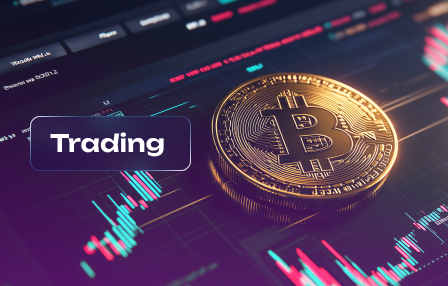5 Mistakes New Crypto Users Make (And How to Avoid Them)
May 1, 2025
To enhance your safety while investing in crypto, prioritize using reputable wallets and exchanges. Many new users fall into the trap of choosing platforms based on flashy advertisements or low fees, overlooking security features like two-factor authentication and withdrawal whitelists. Researching user reviews and verifying the platform’s regulatory compliance can significantly mitigate risks.
Avoid the mistake of investing more than you can afford to lose. It’s easy to get swept up in market hype, but prudent budgeting is essential for long-term success. Set a clear limit on how much you’re willing to invest and stick to it. This strategy helps maintain emotional control during market fluctuations.
Another common pitfall is neglecting thorough research before making investment decisions. New users often rely on social media trends or tips from acquaintances without understanding the underlying technology or market conditions. Utilize guides that break down projects’ fundamentals and provide insights on potential risks and rewards.
In summary, staying informed and cautious can help new crypto users avoid costly mistakes. Adopting these tips will not only enhance your safety but also improve your overall investment experience in the volatile world of cryptocurrency.
Ignoring Security Best Practices
New users must prioritize security by using strong, unique passwords for their crypto accounts. Avoid reusing passwords across multiple platforms to reduce risks associated with data breaches.
Two-factor authentication (2FA) is a critical safety measure. Users should enable 2FA on all exchanges and wallets to add an extra layer of protection against unauthorized access.
Storing cryptocurrencies in hot wallets exposes users to hacking attempts. A hardware wallet offers enhanced safety for long-term storage. This method mitigates risks related to online threats.
Be cautious about phishing scams. Always verify the authenticity of websites and links before entering sensitive information. Bookmark important sites to avoid falling victim to misleading URLs.
Regular software updates on devices can prevent vulnerabilities. Ensure that your operating system, antivirus software, and wallet applications are up-to-date to protect against potential exploits.
Educate yourself about common scams targeting crypto users. Awareness is key to avoiding costly mistakes and ensuring a secure trading experience.
Backing up your wallet’s recovery phrase in a safe place is crucial. This practice ensures you can recover your assets if your device is lost or compromised.
Overlooking Research on Projects
Conduct thorough research before investing in any crypto project. Relying solely on social media hype or influencer opinions can lead to poor decisions and financial loss.
- Examine the Whitepaper: Analyze the project’s whitepaper for its purpose, technology, and roadmap. A clear and detailed whitepaper indicates transparency.
- Check Team Credentials: Investigate the backgrounds of the development team. Look for experience in blockchain technology and previous successful projects.
- Review Community Feedback: Engage with community forums like Reddit or Telegram. Gauge sentiment and concerns from existing users regarding the project.
- Evaluate Market Potential: Assess if the project addresses a real-world problem or has a unique value proposition. Consider its potential user base and market size.
- Avoid FOMO: Don’t rush into investments based on fear of missing out (FOMO). Take your time to gather information before making decisions.
By following these tips, new crypto users can reduce risks associated with uninformed investing. Prioritize safety through diligent research to make informed choices in the crypto space.
Neglecting Proper Wallet Usage
Always use a reputable wallet for storing your crypto assets. Avoid leaving funds on exchanges, as they are prime targets for hacks. Instead, opt for hardware wallets or secure software wallets that provide enhanced safety features.
Regularly update your wallet software to ensure you have the latest security patches. Many attacks exploit outdated versions. Additionally, enable two-factor authentication (2FA) wherever possible to add an extra layer of protection against unauthorized access.
Create strong, unique passwords for your wallets and avoid reusing them across different platforms. Consider using a password manager to keep track of these credentials securely. Also, back up your wallet regularly and store recovery phrases in a safe location away from digital devices.
Educate yourself about phishing scams targeting new users. Always verify URLs before entering sensitive information and be cautious with unsolicited messages claiming to be from wallet providers or support teams.
If you plan to make significant investments, consider splitting your assets across multiple wallets. This strategy minimizes risks by ensuring that not all funds are exposed to potential threats in one place.
Lastly, stay informed about the latest security practices within the crypto community. Following trusted sources will help you maintain a proactive approach towards your wallet’s safety and reduce risks associated with improper usage.
Falling for Scams and FOMO
Always conduct thorough verification before investing in any project. Scammers often create fake websites or social media profiles to lure new users. Use trusted sources to check the legitimacy of any crypto offer. Look for reviews, community feedback, and official announcements.
Avoid the Fear of Missing Out (FOMO) by setting clear investment goals. Establish a budget and stick to it, resisting impulsive decisions driven by market hype. Educate yourself on market trends and historical data to make informed choices rather than succumbing to peer pressure.
Utilize tools like price alerts and portfolio trackers to stay updated without feeling pressured to react immediately. This helps maintain a level-headed approach amidst volatility.
Participate in reputable forums or communities where experienced users share insights about potential risks associated with specific projects. Engaging with knowledgeable individuals can enhance your understanding of red flags related to scams.
Lastly, trust your instincts; if something appears too good to be true, it likely is. Prioritize safety over short-term gains and ensure all investments align with your research and risk tolerance.


